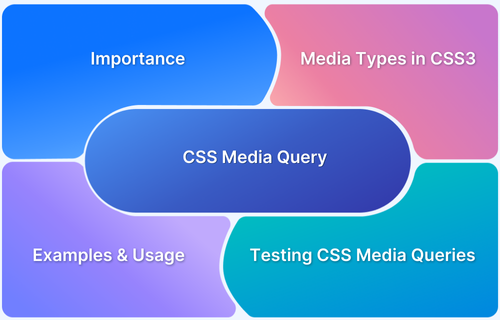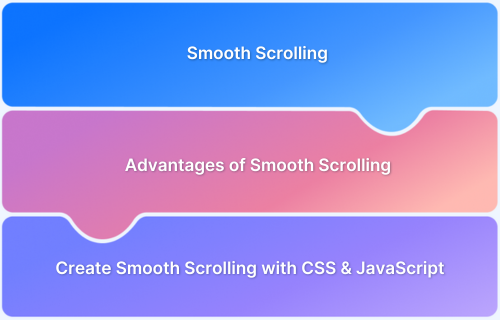CSS is essential for delivering visually consistent and responsive websites, but loading issues can break layouts and disrupt user experience.
Overview
CSS loading issues occur when stylesheets fail to load or render properly, causing broken layouts, unstyled content, or inconsistent user experiences across browsers.
Detecting CSS Loading Issues:
1. Browser Developer Tools:
- Inspect the Network Tab for successful CSS file load (status 200).
- Check Console for CSS-related errors.
- Use Elements/Inspector to verify styles are applied correctly.
- Identify blocking resources like JavaScript or fonts.
2. Server-Side and File System Checks:
- Confirm CSS file path and permissions on the server.
- Ensure the CSS file is available and accessible.
- Clear cache (server or browser) for the latest file version.
- Verify server sends the correct content-type header (text/css).
3. Code Validation and Syntax:
- Use CSS Validators to check for syntax errors.
- Avoid specificity conflicts and overriding styles.
- Test for cross-browser compatibility.
- Ensure correct selectors are used.
This article explores the common causes, solutions, and best practices to detect and resolve CSS loading problems effectively.
What Are CSS Loading Issues?
CSS loading issues refer to problems that arise during the download, parsing, and application of Cascading Style Sheets (CSS) on web pages, resulting in delayed or incorrect page rendering. Because CSS controls the visual presentation and layout of a website, any disruption or inefficiency in loading these styles significantly impacts the user experience and perceived site speed.
Common characteristics of CSS loading problems include:
- Render-blocking delays: CSS files are critical render-blocking resources, meaning the browser must fully load and parse them before it can display styled content. Slow-loading or large CSS files extend this blocking period, causing a delay in First Contentful Paint (FCP) and Largest Contentful Paint (LCP), which affects how quickly users see a usable page.
- Flash of Unstyled Content (FOUC): When CSS is delayed or fails to load properly, the browser may display an unstyled HTML page briefly before applying styles, resulting in a jarring visual flash and poor user experience.
- Excessively large or complex stylesheets: Large CSS bundles or overly complex selectors increase download size and parsing time, further delaying rendering. This inefficiency can slow the overall critical rendering path and inflate time metrics.
- Unused or redundant CSS: Loading styles not used on the current page wastes bandwidth and CPU resources, unnecessarily prolonging render time and increasing memory usage.
- Improperly ordered or blocked CSS files: External CSS files hosted on slow or unavailable servers, or loaded in a blocking manner, can stall page rendering. Misconfigured CSS imports or multiple requests can also exacerbate this.
- CSS delivery issues: CSS that fails to load due to broken links, network errors, or CORS restrictions leads to incomplete styling and dysfunctional page layouts.
- Performance-costly CSS properties: Certain CSS properties like heavy filters (e.g., blur), complex shadows, or inefficient animations can degrade rendering performance by taxing GPU or CPU resources at runtime.
Common Causes of CSS Loading Issues
CSS loading issues commonly arise from several key factors that contribute to delays, incomplete styling, or performance degradation during the rendering of web pages. Understanding these causes helps in diagnosing and fixing problems that slow down page display or cause visual inconsistencies.
- Render-blocking nature of CSS: Since browsers block rendering until CSS files are downloaded and parsed, large or multiple CSS files increase the render-blocking duration, delaying the First Contentful Paint (FCP).
- Excessive CSS file size and complexity: Large, monolithic stylesheets with numerous selectors and rules increase network download times and parsing overhead, slowing page rendering.
- Unused CSS styles: Loading styles that are not applicable on a particular page wastes bandwidth and CPU time, negatively affecting page performance and increasing load times.
- Multiple CSS file requests: Excessive HTTP requests to fetch many CSS files add network latency and delay rendering. Mismanaged CSS imports or fragmented styles worsen this problem.
- Improper use of @import: CSS files imported via @import are often fetched sequentially rather than concurrently, resulting in longer delays compared to using
tags directly. - Slow or unreliable CSS resource hosting: External or third-party CSS hosted on slow servers, or with network issues, can cause missing or delayed style applications.
- Blocking due to CSS dependencies: CSS that depends on fonts, images, or other resources not loaded in time can block rendering until those resources arrive.
- Performance-intensive CSS properties: Heavy use of effects like blur filters, complex shadows, or CSS animations may increase GPU or CPU load, causing slow or choppy visual rendering.
- Lack of optimization (minification, compression): Unminified CSS files with unnecessary whitespace, comments, or code redundancies inflate file size and slow loading.
- Caching misconfigurations: Without effective browser caching, CSS resources must be re-downloaded on every visit, causing repetitive slow load and render times.
How CSS Loading Issues Impact Website Performance and UX
CSS loading issues directly affect both website performance and user experience by delaying how quickly and smoothly a page’s styled content appears. Since CSS controls the visual layout and presentation, any inefficiency or delay in loading stylesheets has the following critical impacts:
- Delayed Visual Rendering and Increased Load Time: Because CSS is a render-blocking resource, slow or large CSS files prolong the browser’s wait before it can paint styled content. This increases key metrics like First Contentful Paint (FCP) and Largest Contentful Paint (LCP), causing users to perceive the site as slow or unresponsive.
- Flash of Unstyled Content (FOUC): When stylesheets load late or fail to load properly, browsers may briefly show unstyled HTML content, leading to a jarring visual flash that disrupts smooth user experience and can reduce trust in the site’s professionalism.
- Layout Instability and Cumulative Layout Shift (CLS): Delays in CSS application can cause page elements to shift positions after initial rendering, frustrating users and negatively impacting Core Web Vitals scores, which are crucial for SEO ranking.
- Increased Network and Processing Overhead: Large or complex CSS files increase data transfer size and CPU parsing time, which can be especially problematic on slow or mobile networks. This can also lead to higher battery usage on mobile devices, impacting user satisfaction.
- Poor Perceived and Actual User Experience: Slow or broken CSS loading can mean users interact with incomplete or broken layouts, making navigation difficult and reducing engagement or conversions.
Proven Ways to Resolve CSS Loading Issues
Resolving CSS loading issues effectively is essential to improve website speed, visual stability, and user experience. The following proven strategies focus on reducing CSS file size, optimizing delivery, and prioritizing critical styles:
- Minify and Compress CSS Files: Minification removes unnecessary whitespace, comments, and formatting from CSS files, reducing file size and download time. Compression (e.g., gzip or Brotli) further decreases the amount of data transferred over the network, speeding up load times.
- Remove Unused CSS: Unused CSS contributes to larger files and longer parsing times. Tools like Chrome DevTools Coverage and specialized utilities help identify and eliminate unused styles, ensuring browsers parse only what is necessary for the current page.
- Simplify and Optimize Selectors: Use simple, efficient CSS selectors to improve parsing speed. Avoid overly complex or deep selectors which increase rendering cost and maintenance complexity. This also helps browsers apply styles faster.
- Inline Critical CSS: Extract and inline CSS required to render above-the-fold content directly in the page’s . This reduces render-blocking requests and enables faster First Contentful Paint (FCP). Load the remaining non-critical CSS asynchronously to avoid blocking rendering.
- Consolidate CSS Files: Combining multiple CSS files into a single stylesheet reduces HTTP requests, which minimizes network latency and speeds up resource loading. Use bundlers to merge styles efficiently without sacrificing modularity.
- Avoid CSS @import for Loading Stylesheets: The @import directive loads CSS files sequentially, causing additional render delay. Prefer
tags to load stylesheets in parallel and improve loading speed. - Use Modern Layout Techniques: Adopt CSS Grid and Flexbox for layouts instead of older float-based methods. These techniques require less CSS code and render more efficiently, enhancing performance and maintainability.
- Lazy-Load Non-Critical CSS: For large applications, consider loading non-essential CSS asynchronously or on-demand after the initial render to reduce the critical rendering path length.
- Enable Caching and Use a CDN: Leverage browser caching to store CSS files locally, preventing repeated downloads on subsequent visits. Use Content Delivery Networks (CDNs) to distribute CSS files from servers geographically closer to users, reducing latency.
- Monitor and Continuously Optimize: Use performance monitoring tools to identify bottlenecks. Regularly audit CSS performance during development to prevent regressions.
Detect CSS Loading Issues with BrowserStack Website Scanner
BrowserStack Website Scanner offers a powerful, automated solution to detect CSS loading issues alongside other critical web performance problems. By running comprehensive scans of your web pages, it automatically identifies missing CSS files, broken resources, and rendering failures to ensure your sites look and function exactly as intended.
Key benefits include:
- Automatic Detection of Missing or Broken CSS: The scanner flags any CSS resources that fail to load due to broken links, network errors, or improper hosting, preventing incomplete or incorrect styling on your pages.
- Identifies Visual and Rendering Inconsistencies: By analyzing page rendering across multiple browsers and devices in real user environments, it spots style-related layout shifts, flashes of unstyled content (FOUC), and other CSS application errors early.
- Covers Comprehensive Issue Types: Along with CSS problems, the scanner scans for broken images, failed JavaScript rendering, and missing assets in a single unified report, helping streamline web quality checks.
- Automated and Scheduled Scans: Set up recurring scans or trigger on-demand to continuously monitor your website for new or recurring CSS and rendering problems during ongoing development and after deployment.
By using BrowserStack Website Scanner to automatically detect CSS loading issues, development teams can quickly identify root causes, reduce manual QA effort, and maintain a visually consistent and fast-loading website for all users.
Conclusion
CSS loading issues can break layouts, slow down websites, and frustrate users if left unresolved. By understanding their causes, applying proven fixes, and following best practices, you can maintain visually consistent and high-performing web pages.
With BrowserStack Website Scanner, you can proactively detect missing CSS files, broken images, and rendering failures, ensuring your site always looks and works exactly as intended.









